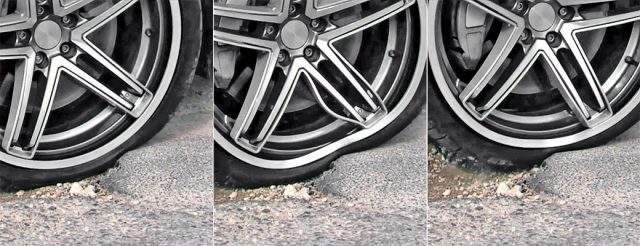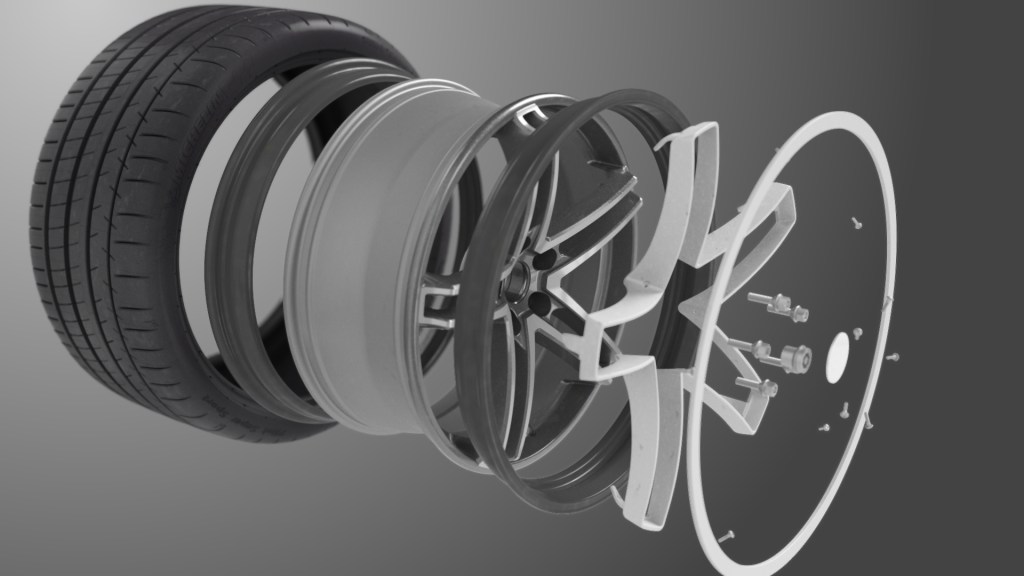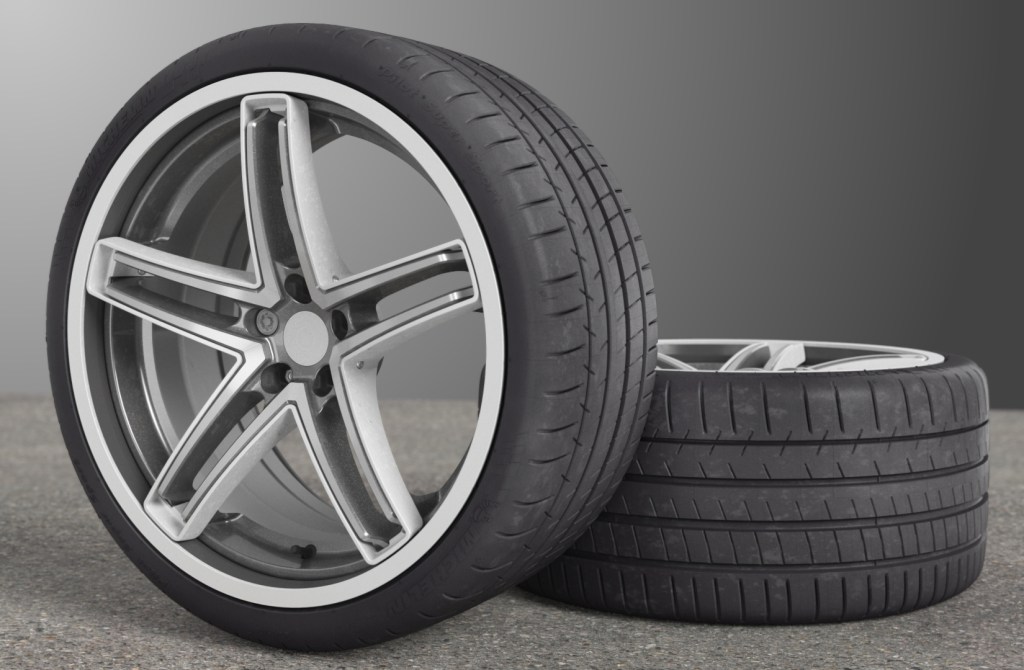
The Flexible Wheel Is Finally Here: No More Bent Rims
You know the drill; you hit a particularly bad pothole with your low-profile tires and it’s so jarring your teeth rattle. If you’re lucky, you’ll only feel a vibration from your now-bent wheel. That, or it loses air pressure and within seconds you’ve got a flat tire. Low-profile tires look great, but in a pothole world, they’re not so great. Now Michelin has a solution. The flexible wheel is finally here; no more bent rims.
Yes, it’s true. Michelin has been working with Maxion Wheels to develop a tire and wheel combo that deflects without losing air, balance, or permanent deformity. With Michelin at the forefront of tire technology, it worked in conjunction with Maxion to fix the problem of wheel edges tearing the tire while bending the wheel from a pothole. When the tire gets pressed against the rim the rim acts like scissors cutting it but also damaging the rim.
With the Acorus technology, you have a two-piece wheel. One part is like a normal rigid wheel. This allows the tire and wheel to suppose the car’s weight. The second part is made up of two flexible bands located at the outside edges of the tire. These isolate the tire from making contact with the rim. There is also a third insert that is the decorative part of the wheel.It is placed over the rigid center wheel.
There are a number of advantages to the flexible wheel system
When there is severe contact the tire presses against the bands and pushes them up into the rigid portion of the wheel. This protects both the tire and rim. But there are other, hidden advantages.

With the tire able to move around the rigid wheel the pressure or jolt of the tire is not distributed directly to the suspension. It acts as a secondary suspension smoothing out the ride. Now you can go with larger wheels and lower-profile tires if so desired because there is more protection for both the wheels and tires.
The Acorus system doesn’t require special tires
The final advantage is that you don’t need a special tire. Though it is a special system it doesn’t require special tires. Most every tire made can fit the wheel’s bands so there is no need to purchase special, expensive tires.

This technology has been around for a couple of years. We’re puzzled as to why this technology has not been incorporated into premium vehicles? We’ve seen it’s airless tires on various vehicles over the years but, to be honest, they have an odd look about them.
With the Acorus technology, the flexible system is mostly disguised. And you could actually go with lower-profile tires and larger wheels with the system. The airless tires don’t provide that flexibility. We’ll be anxious to see if and when this new tire technology makes its way to the OEs.



